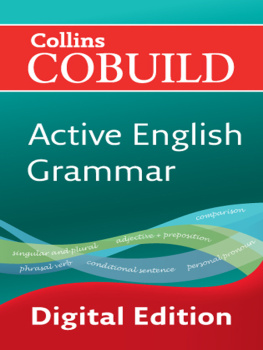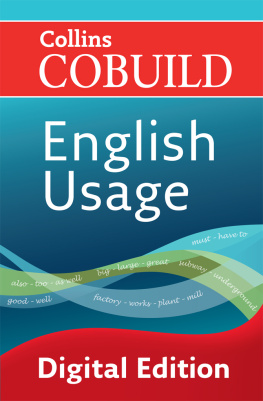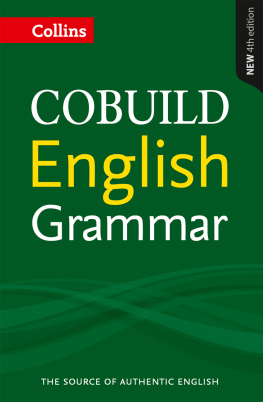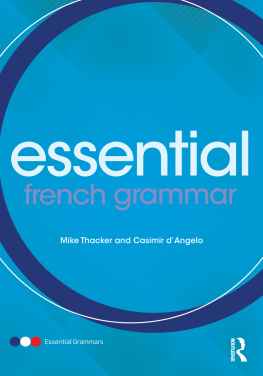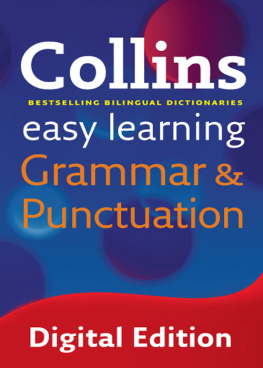

firs edition 2003; reissued 2011
HarperCollins Publishers 2003, 2011
HarperCollins Publishers
Westerhill Road, Bishopbriggs, Glasgow G64 2QT
Great Britain
www.collinslanguage.com
Collins, COBUILDand Bank of Englishare registered trademarks of HarperCollins Publishers Limited
EPUB Edition August 2011 ISBN 978-0-00-744482-3
_______________
Editorial Director Managing Editor
Michela Clari Maree Airlie
Editors
Gwyneth Fox Ramesh Krishnamurthy Jenny Watson
Christina Rammell Keith Stuart Alison Macaulay
Publishing Director
Lorna Sinclair Knight
_______________
Corpus Acknowledgements
We would like to acknowledge the assistance of the many hundreds of individuals and companies who have kindly given permission for copyright material to be used in the Bank of English. The written sources include many national and regional newspapers in Britain and overseas; magazine and periodical publishers; and book publishers in Britain, the United States, and Australia. Extensive spoken data has been provided by radio and television broadcasting companies; research workers at many universities and other institutions; and numerous individual contributors.
We are grateful to them all.
_______________
All rights reserved under International and Pan-American Copyright Conventions. By payment of the required fees, you have been granted the non-exclusive, non-transferable right to access and read the text of this e-book on screen. No part of this text may be reproduced, transmitted, downloaded, decompiled, reverse engineered, or stored in or introduced into any information storage and retrieval system, in any form or by any means, whether electronic or mechanical, now known or hereinafter invented, without the express written permission of HarperCollins.
A catalogue record for this book is available from the British Library
Computer typeset by Wordcraft, Glasgow
Printed and bound in Italy by Rotolito
INTRODUCTION
T he Collins COBUILD Active English Grammar provides learners of English from intermediate level upwards with the grammar they need to know for effective use of English. The most important points of English grammar are explained in a clear, simple way, with hundreds of examples showing grammatical structures in use. The examples have been taken from the Bank of English, a vast collection of contemporary texts from different sources, totalling over 500 million words. The Units in Collins COBUILD Active English Grammar have been logically organized and there are numerous notes to warn of potential errors. The additional glossary of grammar terms enables learners to fully understand the terminology used, and helps them to master the essential aspects of English grammar.
The attractive colour layout and spacious design makes the Collins COBUILD Active English Grammar user-friendly and easily accessible the ideal reference tool for learners of English.
CONTENTS
LIST OF UNITS
| BASIC SENTENCE STRUCTURE |
| QUESTIONS |
| NEGATIVES |
| NOUNS |
| PRONOUNS AND POSSESSIVES |
| DETERMINERS |
| ADJECTIVES |
| COMPARISON |
| ADVERBIALS |
| PREPOSITIONS AND PHRASAL VERBS |
| TRANSITIVITY: VERBS AND OBJECTS |
| TENSES |
| CONDITIONALS AND HYPOTHETICAL SITUATIONS |
| -ING CLAUSES AND INFINITIVES |
| REPORTED SPEECH |
| THE PASSIVE VOICE |
| MODALS |
| RELATIVE CLAUSES AND PARTICIPLE CLAUSES |
| OTHER KINDS OF CLAUSES |
Registered trademarks
Entered words that we have reason to believe constitute trademarks have been designated as such. However, neither the presence nor absence of such designation should be regarded as affecting the legal status of any trademark.
Unit 1 Clauses and sentences
Main points
Simple sentences have one clause.
Clauses usually consist of a noun group as the subject, and a verb group.
Clauses can also have another noun group as the object or complement.
Clauses can have an adverbial, also called an adjunct.
Changing the order of the words in a clause can change its meaning.
Compound sentences consist of two or more main clauses. Complex sentences always include a subordinate clause, as well as one or more main clauses.
A simple sentence has one clause, beginning with a noun group called the subject. The subject is the person or thing that the sentence is about. This is followed by a verb group, which tells you what the subject is doing, or describes the subjects situation.
I waited.
The girl screamed.
The verb group may be followed by another noun group, which is called the object. The object is the person or thing affected by the action or situation.
He openedthe car door.
She marrieda young engineer.
After link verbs like be, become, feel, and seem, the verb group may be followed by a noun group or an adjective, called a complement. The complement tells you more about the subject.
She wasa doctor.
He wasangry.
The verb group, the object, or the complement can be followed by an adverb or a prepositional phrase, called an adverbial. The adverbial tells you more about the action or situation, for example how, when, or where it happens. Adverbials are also called adjuncts.
They shoutedloudly.
She won the competitionlast week.
He was a policemanin Birmingham.
The word order of a clause is different when the clause is a statement, a question, or a command.
He speaksEnglish very well. (statement)
Did she winat the Olympics? (question)
Stopher. (command)
Note that the subject is omitted in commands, so the verb comes first.
A compound sentence has two or more main clauses: that is, clauses which are equally important. You join them with and, but, or or.
He met Jane at the stationandwent shopping.
I wanted to gobutI felt too ill.
You can come noworyou can meet us there later.
Note that the order of the two clauses can change the meaning of the sentence.
He went shoppingandmet Jane at the station.
If the subject of both clauses is the same, you usually omit the subject in the second clause.
I wanted to gobut felttoo ill.
A complex sentence contains a subordinate clause and at least one main clause. A subordinate clause gives information about a main clause, and is introduced by a conjunction such as because, if, that, or a wh-word. Subordinate clauses can come before, after, or inside the main clause.

